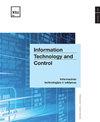A Scalable and Stacked Ensemble Approach to Improve Intrusion Detection in Clouds
IF 2
4区 计算机科学
Q3 AUTOMATION & CONTROL SYSTEMS
引用次数: 0
Abstract
The availability of automated data collection techniques and the growth in the amount of data collected from cloud network traffic and cloud resource activities has transformed into a big data challenge, compelling the engagement of big data tools to handle, manage, and interpret it. A single classification method may fail to execute successfully for the amount of acquired data. Despite being more complex and consuming more computational resources, the research shows that stacking-based ensemble Machine Learning (ML) methodologies perform better in data classification approaches than single classifiers. This research proposes Intrusion Detection Systems (IDS), both based on the ensemble of ML algorithms built on the Stacked Generalization Approach (SGA) and big data technology. The suggested approaches are tested and assessed on NSL-KDD and UNSW-NB15 datasets, utilizing a Gain Ration (GR) based Feature Selection (FS) approach, J48, OneR, Support Vector Machine (SVM), Random Forest (RF), Multi- layer Perceptron (MLP) and Extreme Gradient Boosting (XGBoost) classifiers and Apache Spark, a prominent big data processing platform. The first technique involves storing data on HDFS, while the second involves selecting the most suitable subset of base classifiers for stacking. A thorough performance investigation reveals that our proposed model outperforms other current IDS models either in terms of accuracy or FPR or other performance metrics, in discovering intrusions for the Cloud.改进云中入侵检测的可扩展堆叠集合方法
随着自动数据收集技术的普及,从云网络流量和云资源活动中收集到的数据量不断增长,这已转化为一项大数据挑战,迫使人们使用大数据工具来处理、管理和解释这些数据。单一的分类方法可能无法成功处理大量获取的数据。研究表明,尽管基于堆叠的集合机器学习(ML)方法更为复杂,消耗的计算资源也更多,但它在数据分类方法中的表现要优于单一分类器。本研究提出了基于堆叠泛化方法(SGA)和大数据技术的集合机器学习算法的入侵检测系统(IDS)。利用基于增益率(GR)的特征选择(FS)方法、J48、OneR、支持向量机(SVM)、随机森林(RF)、多层感知器(MLP)和极梯度提升(XGBoost)分类器以及著名的大数据处理平台 Apache Spark,在 NSL-KDD 和 UNSW-NB15 数据集上对所建议的方法进行了测试和评估。第一种技术是在 HDFS 上存储数据,第二种技术是选择最合适的基础分类器子集进行堆叠。全面的性能调查显示,我们提出的模型在发现云入侵方面,无论是准确率、FPR 还是其他性能指标,都优于当前的其他 IDS 模型。
本文章由计算机程序翻译,如有差异,请以英文原文为准。
求助全文
约1分钟内获得全文
求助全文
来源期刊

Information Technology and Control
工程技术-计算机:人工智能
CiteScore
2.70
自引率
9.10%
发文量
36
审稿时长
12 months
期刊介绍:
Periodical journal covers a wide field of computer science and control systems related problems including:
-Software and hardware engineering;
-Management systems engineering;
-Information systems and databases;
-Embedded systems;
-Physical systems modelling and application;
-Computer networks and cloud computing;
-Data visualization;
-Human-computer interface;
-Computer graphics, visual analytics, and multimedia systems.
 求助内容:
求助内容: 应助结果提醒方式:
应助结果提醒方式:


